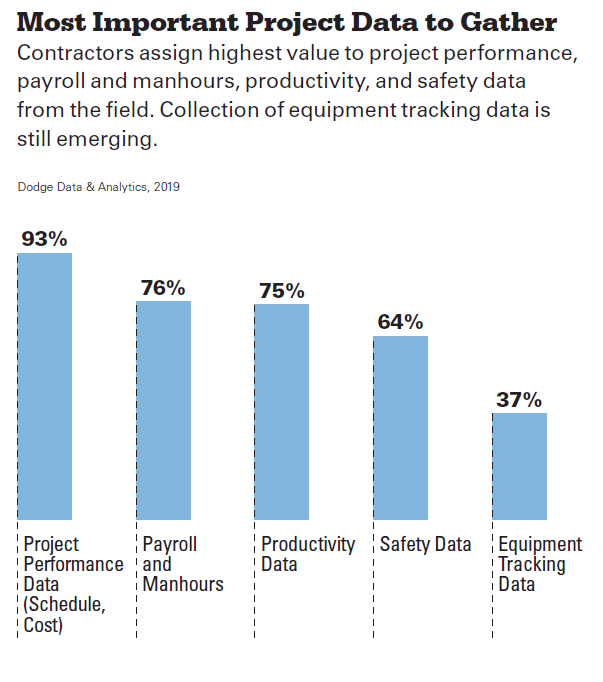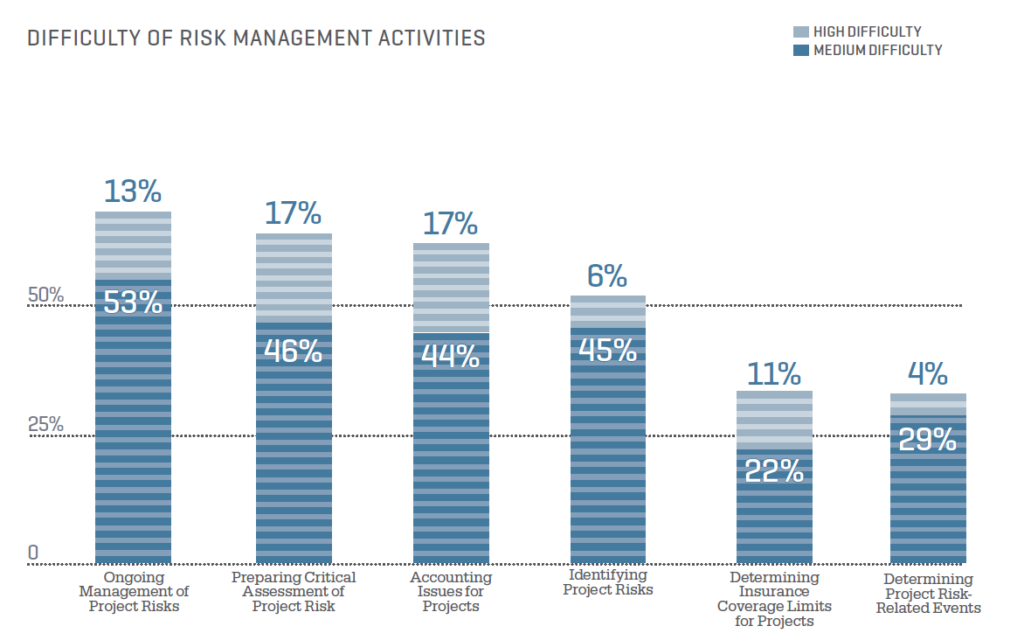Everyone knows that good construction project management is essential for successfully completing a construction project. Every project type, be it commercial, residential, or industrial, has to be overseen from the beginning to the end.
Construction project management consists of multiple stages: planning, designing, execution, and closeout. Each stage has its own objectives in terms of cost, time, and scope.
To make sure those goals are achieved, managing a project also involves quality control, scheduling, procurement, and resource allocation.
The purpose is to deliver a satisfactory final project to the client on time and within budget.
So, in this article, we’re outlining important processes you need to be aware of in construction project management to finish your construction projects successfully.
In this article...
Construction Project Ideation
Is the project you want to take on even worth your time?
It’s one thing to assume you have the necessary equipment and labor to undertake a project, but knowing for sure is another. What you really need is hard data to back your initial estimations. Only then can you make the right decision.
Starting a project you can’t finish can spell disaster for your construction company.
Potentially, you are liable for contract breaches and face fines or lawsuits. Losing your reputation and money is not worth any time you might save by rushing through project ideation.

Basically, in the ideation stage, you need to scrutinize every detail of the project to assess whether it aligns with the company’s portfolio and ROI. You also have to make sure it complies with necessary regulations and poses minimal risk.
So, in this stage, you can expect a lot of brainstorming, research, and data analysis.
One of the ways you can compile necessary data is to conduct feasibility studies which you’ll present to decision-makers.
These studies should break down costs, scheduling, deliverables, and other factors.
Essentially, the role of feasibility studies is to determine and explain why a project is a good fit for your company.
To initiate a project, you have to cover the benefits and drawbacks, including conducting the preliminary risk assessment.
Once you have a good overview of a project, it’ll be easier to define the scope of your project and conduct a more comprehensive execution plan.
Defining the Scope of Work
Defining the scope of the project means creating a document that outlines the obligations and activities that go into a construction project.
To put it simply, the scope describes what your contractors, subcontractors, and suppliers need to do to complete a construction project. Everyone should read the scope of work documents, so make sure they’re clear, concise, and simple enough.
But what goes into the scope of work?
If you’re writing such a document, pay attention to the five main elements:
| Project Overview | Offers a summary of a project Highlights main objectives Short project description |
| Project Scope | Goal specification (budget, tech) List of milestones Quantifiable data |
| Project Deliverables | List of objectives and targets Relevant information for contractors Project requirements |
| Project Schedule | Timeline for the required work Delivery and completion dates Task time framework |
| Project Management | Information for the project management team Details for project administration (payment, legal, etc.) Specific changes to the original contract |
The level of detail included in your scope of work can vary from project to project.
Sometimes it is simply a general overview of the main tasks and activities that need doing, but it can also be a detailed program describing significant milestones, roles, responsibilities, and timeframes for reporting and delivery.
It is important that each party, from the client to the worker, is clear about what their involvement in the project includes.
But you should also remember that changes in construction often happen, so your scope of work should allow for divergences from the plan—like, to use the most basic example, using a different type of material when one is not available.
If you don’t clearly define what changes are allowed, it can cause confusion or even disputes for which you won’t be compensated.
In the end, everyone should be aware of where their work on the project begins and ends. So, the scope of work is a way of agreeing to project requirements between the client and contractors.
Planning the Construction Project
Once you’ve defined the scope of your project, you’re ready to plan out each phase of the construction project. The more detail you put into your planning process, the more successful you’ll be at reaching your objectives.
Mark Lansbury was a construction project manager at Inland Homes PLC for three years. His biggest frustration was being unable to be more involved in the core construction activities as he progressed on the managerial ladder.
When he became a project manager, he had to focus on reporting and managing people. He says that his key skill became getting people to work.
So, instead of going to construction sites, his main task was to plan projects in enough detail to empower everyone to complete a project successfully.
Effective planning meant he didn’t have to micromanage everything, as the majority of challenges related to the scope, cost, and schedule would be solved ahead of time.

So, take the scope of work and break down your project plans according to scheduling and budget. These two components determine goals and milestones, while shaping communication, as well as safety and risk considerations.
Effective scheduling improves resource allocation and sets the foundation for future performance and task monitoring.
With the right practices, you’ll be able to predict potential delays and communicate with the right people if any problems arise.
Contractors often complain that some stakeholders (specifically, clients) cause delays with their indecisiveness, so setting a timeframe and making it known to everyone can help you speed up the process while avoiding conflicts.
Some scheduling techniques you can consider include:
- Gantt Charts: Very useful for projects which require a high level of creativity; they help you visualize the project’s progression and encourage you to find novel ways to reach your objectives.
- Line of balance scheduling: Developed in the 1940s, this method maps out recurring tasks that go into a project, making it easier to allocate resources, assign roles and predict outcomes.
- Critical path method: Involves defining the resources necessary to achieve a goal, as well as its priority to the overall project, which makes it useful in complex projects. However, although it’s probably the most common type of scheduling, in construction it usually has to be combined with another type to yield the best results.
- Q-scheduling: So-called quantitative scheduling illustrates resource requirements in time across locations through bar charts, and it’s particularly useful for projects that entail lots of repetitive tasks but with a fluctuating budget.
The budget is often the key factor that determines the viability of a project. The equipment you can use, the number of workers you can pay, and which materials you can use, among other things, will depend on your budget.
So, plan for budget limitations, establish project priorities, and create financial agreements carefully.
Keeping an eye on the costs is essential to fulfilling contracts and monitoring the project’s progression. If the resources are misused, the project will likely fail.
Basically, a plan should be a detailed roadmap for every stakeholder to complete the project on time and within budget.
Executing Construction Plans
In the execution process, you begin the physical work on your construction project. So, you’ll get to see people finish outlined tasks and the project’s progress according to the planned schedule.
In other words, now it’s time to test your plans!

It’s easy to assume nothing can go wrong if you’ve planned everything in great detail. But that’s simply not true. In fact, managing expectations is a hidden skill required in construction projects.
Those expectations mainly come from different stakeholders, so it’s important to keep everyone informed to deal with unexpected changes in the project plans. You can imagine that this process will include a lot of meetings and coordination.
When Mark Lansbury, whom we’ve mentioned earlier, started his career in construction, he was given an opportunity to work on a rather challenging project.
He was tasked to manage it (with the help of the team) and tackle problems as they arose.
As the project unfolded, there was an issue with the foundation that the project team didn’t account for, which called for significant changes in the design.
Lansbury had to communicate with the design team and the site workers to implement necessary changes.
Aside from that, Lansbury also participated in a lot of meetings with stakeholders, reporting on the project’s progress, deadlines, and resource allocation, among other things.
He had to make important decisions to make sure the plan was executed, such as moving labor to some other areas to speed up the project’s progress.
The goal in this stage is to implement project plans as closely as you can, but you should also be flexible enough to allow for certain changes as you come closer to the completion date.
Construction Project Monitoring
Once the execution process starts, you have to start monitoring the entire project.
As mentioned before, many things can go wrong, and even minor setbacks can snowball into serious issues over time, so it’s important to keep an eye on every process.
But what to track and monitor?
Contractors rely on data to improve productivity and performance on worksites.
To do this, they use a myriad of tools (spreadsheets, mobile apps, software, etc.), and in recent years they have been switching from manual data gathering to digital solutions.

Gathering data concerning task completion, scheduling and associated costs keeps everyone accountable, making it it easier to stick to the plan.
Basically, you can see how many tasks have been completed, at what time, and the quality of the finished work so far.
If anything falls behind, you can identify the root cause and jump in with a solution to keep the project on track.
One big problem Mark Lansbury deals with in his job as a project manager is getting everyone equally involved in the project.
This is often an issue with consultants who work on many different projects simultaneously, and their priorities for Lansbury’s project are different.
It’s not to say they won’t do a good job, but what Lansbury sees as a pressing issue might not be as important in their eyes.
So, Lansbury needs to make sure that everyone works at the same pace and follows the same deadlines, from those who are 100% involved in the project to those who only occasionally show up on the worksite.
To help him in this process, it’s crucial that he monitors the previously mentioned parameters.
Additionally, it’s not just people you need to monitor.
Having a clear overview of the equipment’s performance is also important to improve productivity on site.
So, invest in good tracking software that will help you monitor your assets.
Monitoring is really about keeping control of the project. You’ll only be able to meet deadlines, cover costs, and ensure quality if you use reliable methods to oversee the project.
Change and Risk Management
Do you know the biggest issue project managers face once construction starts?
According to recent research, it’s risk management. Almost 66% professionals report having difficulties managing ongoing project risks, and 51% have problems even identifying those risks.

This is a serious problem in the industry. Construction projects are notorious for frequent and ongoing changes that can lead to time and budget overruns, especially if you fail to anticipate any potential issues.
It’s crucial to have contingency plans.
So, what can you do to manage risk effectively?
First, start by properly identifying the type of risk connected to the project you’re working on. Then you’ll be able to mitigate changes effectively.
| Safety Risks | Identify areas and situations that pose a hazard to workers’ health and safety. Frequently conduct safety inspections and training. |
| Financial Risks | Unrealistic growth predictions, lack of sales, economic problems, and increases in prices can lead to financial problems and project failure. |
| Contractual Risks | Unclear contracts, poor project quality, and the failure to complete a job on time can result in penalties and legal action. |
| Project Risks | These include delays, increased material costs, and poor project management. |
| Stakeholder Risks | Projects are affected by inefficient communication with project investors and stakeholders. Misunderstanding project deliverables and the closeout process are also important factors. |
| Environmental Risks | Natural disasters can cause damage and slow down a project’s progress. |
Next, you need to remember that every project is unique, and so are its problems. For each project you take on, you need to put specific measures to help you solve these or any other problems you encounter.
Finally, let’s take advice from a lawyer specializing in construction law. Jean Patrick Dallaire is a partner at Langlois Lawyers, and his main job is construction disputes resolution.
His advice to construction companies is to pay close attention to creating contracts.
The more transparent, fair, and specific you are, the better you’ll follow project requirements.
This means that you need to include all manners of risk insurance in contracts to protect your company.
So, implement bonding, subcontracting, and contingency funds as well as compensation should there be unforeseen problems.
If there’s one thing you can count on is that your construction project will fall victim to some unexpected problems. But your construction plans and overall project management should absorb the effects of most changes and risks.
Conclusion
Construction projects require enormous efforts, and finishing them can be quite a challenge.
Project managers need to ensure their success through planning, resource management, budgets, scheduling, among other things. To do so, they rely on various processes in the different stages of the project.
The early stages, project ideation and planning, set the foundation for the rest of the project. Once you have an overview of the project and know the necessary steps to complete it, you can put those plans into practice.
In addition to proper execution, it’s crucial to monitor every project from start to finish and assess any risk that can emerge.
Overlooking problems or relying on inaccurate data can quickly derail construction projects and cost you time, money, and reputation.
Keeping track of so many elements can be exhausting, but when you see a project through while keeping the client satisfied, you realize it’s ultimately worthwhile.





